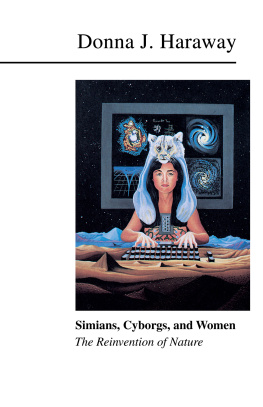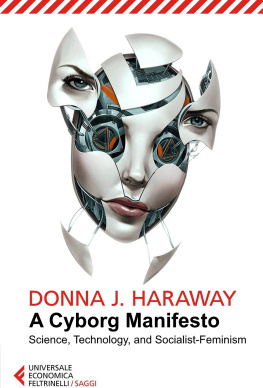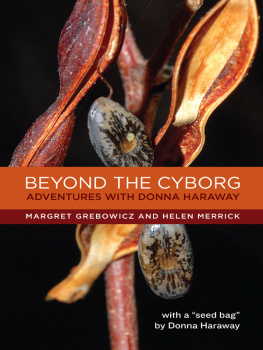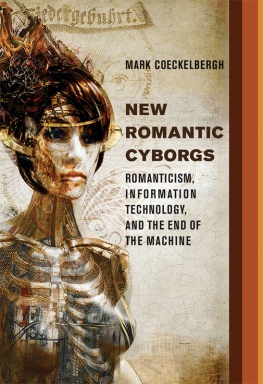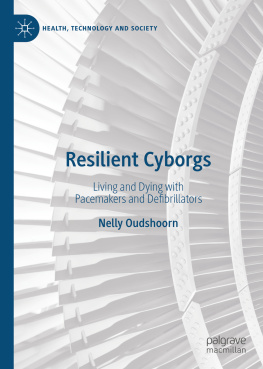Simians, Cyborgs, and Women
The idea that nature is constructed, not discovered - that truth is made, not found - is the keynote of recent scholarship in the history of science. Tracing the gendered roots of science in culture, Donna Haraway's writings about scientific research on monkeys and apes is arguably the finest scholarship in this tradition. She has carefully studied the publications, the papers, the correspondence, and the history of the expeditions and institutions of primate studies, uncovering the historical construction of the pedigrees for existing social relations - the naturalization of race, sex, and class. Throughout this book she is analysing accounts, narratives, and stories of the creation of nature, living organisms, and cyborgs (cybernetic organisms: systems which embrace organic and technological components). She also looks critically at the immune system as an information system, and shows how deeply our cultural assumptions penetrate into allegedly value-neutral medical research. In several of these essays she explores and develops the contested terms of reference of existing feminist scholarship; and by mapping the fate of two potent and ambiguous words - 'nature' and 'experience' - she uncovers new visions and provides the possibility of a new politics of hope.
Her recent book, Primate Visions, has been called outstanding, original, 'brilliant', 'important' by leading scholars in the field. Simians, Cyborgs , and Women contains ten essays written between 1978 and 1989. They establish her as one of the most thoughtful and challenging feminist writers today.
Donna Haraway is a historian of science and Professor at the History of Consciousness Board, University of California, Santa Cruz. She received her doctorate in biology at Yale and is the author of Crystals, Fabrics, and Fields: Metaphors of Organicism in Twentieth-Century Developmental Biology and Primate Visions: Gender, Race, and Nature in the World of Modern Science.
Simians, Cyborgs, and Women
The Reinvention of Nature
DONNA J. HARAWAY
Routledge / New York
Published in 1991 by
Routledge
Taylor & Francis Group
270 Madison Avenue
New York, NY 10016
Published in Great Britain by
Routledge
Taylor & Francis Group
2 Park Square
Milton Park, Abingdon
Oxon OX14 4RN
1991 by Donna J. Haraway
Routledge is an imprint of Taylor & Francis Group
Transferred to Digital Printing 2010
International Standard Book Number-10: 0-415-90387-4 (Softcover)
International Standard Book Number-13: 978-0-415-90387-5 (Softcover)
Library of Congress Card Number 90-8762
No part of this book may be reprinted, reproduced, transmitted, or utilized in any from by any electronic, mechanical, or other means, now known or hereafter invented, including photocopying, microfilming, and recording, or in any information storage or retrieval system, without written permission from the publishers.
Trademark Notice: Product or corporate names may be trademarks or registered trademarks, and are used only for identification and explanation without intent to infringe.
Library of Congress Cataloging-in-Publication Data
Haraway, Donna Jeanne.
Simians, cyborgs, and women: the reinvention of nature / by Donna J. Haraway.
p. cm.
Includes bibliographical references (p. ) and index.
ISBN 0-415-90386-6. - ISBN 0-415-90387-4 (pbk).
1. Sociobiology. 2. Feminist criticism. 3. PrimatesBehavior. 4. Human behavior. I. Title.
GN365,9H37. 1991
304.5dc20
90-8762
informa
Taylor & Francis Group
is the Academic Division of Informa plc.
Visit the Taylor & Francis Web site at http://www.taylorandfrancis.com
and the Routledge Web site at http://www.routledge-ny.com
Publisher's Note
The publisher has gone to great lengths to ensure the quality of this reprint but points out that some imperfections in the original may be apparent.
For my parents, Dorothy Maguire Haraway (1917-1960) and Frank O. Haraway
Contents
Many people and many publishing practices made this book possible, beginning with the anonymous referee for Signs for my first published essays in feminist theory. This generous and critical person turned out to be Rayna Rapp, who has been a personal, intellectual, and political support and inspiration for me ever since. Catherine Stimpson was the editor for those papers, and her theoretical work and editorial skill have enriched my writing and that of many other contributors to contemporary feminism. Constance Clark and Stephen Cross, then graduate students at Johns Hopkins, will see their pervasive influence. Robert Young's ground-breaking writing and committed comradeship showed me that the history of science could be both political and scholarly without compromise. I owe much to his work and that of many others, especially Karl Figlio, Ludi Jordanova, and Les Levidow, associated with Radical Science Journal, Science as Culture, and Free Association Books.
Friendship, ongoing critical conversations, and published and unpublished intertextualities with Judith Butler, Elizabeth Fee, Sandra Harding, Susan Harding, Nancy Hartsock, Katie King, Diana Long, Aihwa Ong, Joan Scott, Marilyn Strathern, and Adrienne Zihlman everywhere inform these chapters. I also thank Frigga Haug and Nora Rathzel from the feminist collective of Das Argument and Elizabeth Weed of differences. Jeffrey Escofier was a persistent gadfly and gentle midwife for the Cyborg Manifesto (Chapter Eight). Scott Gilbert, Michael Hadfield, and G. Evelyn Hutchinson taught me about embryology, ecology, the immune system and much else in the culture of biology.
Extraordinary people whom I first knew through the History of Consciousness Board and graduate seminars at the University of California at Santa Cruz contributed expSicidy and implicitly to this book. I am especially grateful to Gloria Anzaldua, Bettina Aptheker, Sandra Azeredo, Faith Beckett, Elizabeth Bird, Norman O. Brown, Jim Clifford, Mary Crane, Teresa de Lauretis, Paul Edwards, Ron Eglash, Barbara Epstein, Peter Euben, Ramona Fernandez, Ruth Frankenberg, Margo Franz, Thyrza Goodeve, Deborah Gordon, Chris Gray, Val Hartouni, Mary John, Caren Kaplan, Katie King, Hilary Klein, Lisa Lowe, Carole McCann, Lata Mani, Alvina Quintana, Chela Sandoval, Zoe Sofoulis, Noel Sturgeon, Jenny Terry, Sharon Traweek, and Gloria Watkins (bell hooks).
Financial support for writing portions of this book was provided by Academic Senate Research Grants of the University of California at Santa Cruz and the Alpha Fund of the Institute for Advanced Study.
Others have offered support and inspiration in countless ways over many years. These essays especially show the imprint of living and working with Gail Coleman, Layla Krieger, Richard and Rosemarie Stith, Carolyn Hadfield, Robert Filomeno, Jaye Miller, and Rusten Hogness. Finally, I dedicate this book to my parents, Frank Haraway, a sports reporter who showed me that writing can be simultaneously pleasure and work, and Dorothy Maguire Haraway, who died in i960 before I could know her as an adult, but who had communicated to me the trouble and strength of belief and commitment.
The following chapters have been revised from previously published essays, and are printed here with permission. Chapter One originally appeared under the tide 'Animal sociology and a natural economy of the body politic, part I, a political physiology of dominance', in Signs 4 (1978): 21-36. Chapter Two, under the tide 'Animal sociology and a natural economy of the body politic, part II, the past is the contested zone: human nature and theories of production and reproduction in primate behavior studies', in Signs 4 (1978): 37-60. Chapter Three, 'The biological enterprise: sex, mind, and profit from human engineering to sociobiology', in Radical History Review 20 (1979): 206-37. Chapter Four, 'In the beginning was the word: the genesis of biological theory', in Signs 6 (1981): 469-81. Chapter Five, 'The contest for primate nature: daughters of man the hunter in the field, 1960-80', in Mark Kann, ed. The Future of American Democracy: Views from the Left (Philadelphia: Temple University Press, 1983, pp. 175-207). Chapter Six, 'Reading Buchi Emecheta: contests for 'women's experience' in women's studies', in Inscriptions 3/4 (1988): 107-24. Chapter Seven, as 'Geschlecht, Gender, Genre: Sexualpolitik eines Wortes', in Kornelia Hauser, ed. Viele Orte. Uberall? Feminismus in Bewegung, Festschrift for Frigga Haug. (Berlin: Argument-Verlag, 1987, pp. 22-41). Chapter Eight, as 'Manifesto for cyborgs: science, technology, and socialist feminism in the 1980s', Socialist Review 80 (1985): 65-108. Chapter Nine, as 'Situated knowledges: the science question in feminism as a site of discourse on the privilege of partial perspective', in Feminist Studies 14(3) (1988): 575-99. Chapter Ten, as 'The biopolitics of postmodern bodies: determinations of self in immune system discourse', in differences: A Journal of Feminist Cultural Studies 1(1) (1989): 3-43.

